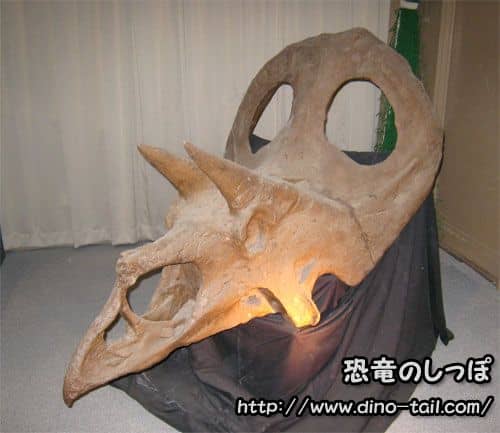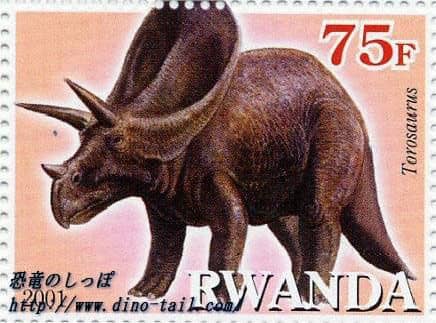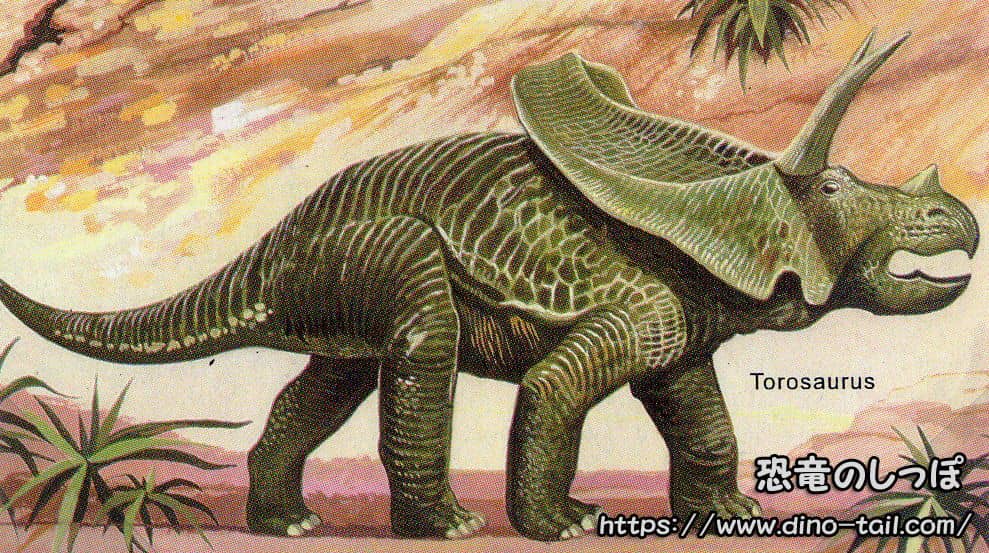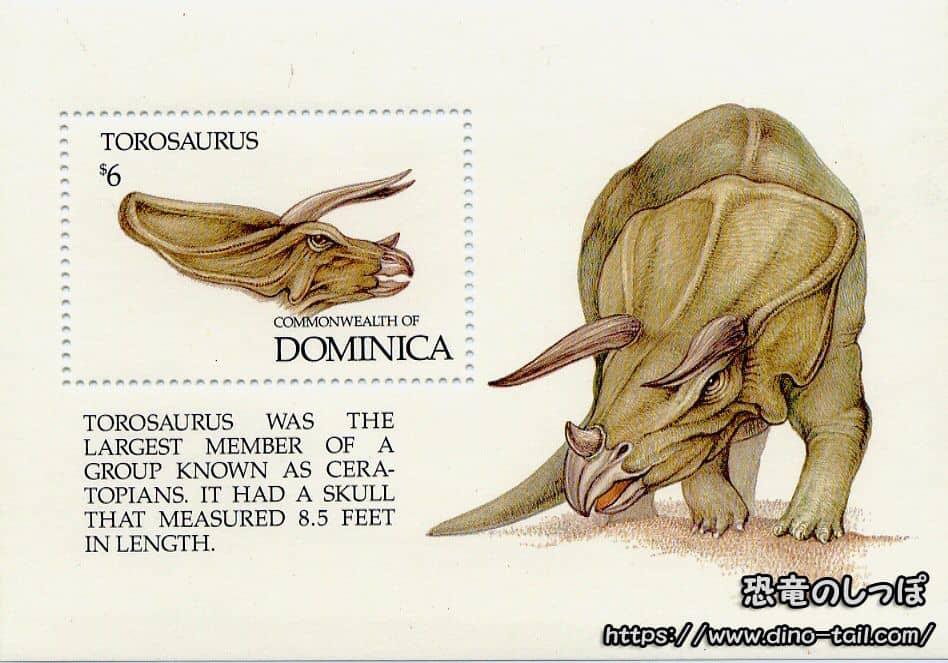About Torosaurus
| Scientific Name (Genus) | Torosaurus |
| Meaning of Name |
Perforated lizard
toros (pierced, perforated) [Greek] - sauros (lizard) [Greek] |
| Classification | Ornithischia, Marginocephalia (Ceratopsia) |
| Total Length | Approx. 6 - 8m |
| Diet | Herbivorous |
| Period | Late Cretaceous (approx. 68-66 million years ago) |
| Sub-classification/Species |
Torosaurus latus
Torosaurus utahensis |
| Year of Paper Publication | 1891 |
| Publication |
Notice of new vertebrate fossils.
The American Journal of Science, series 3 42. by Othniel Charles Marsh. 1891. |
Features
Torosaurus holds the record for the largest head of any known land animal, past or present.

Its skull reached a length of 2.7 meters and was equipped with a total of three horns, one on its nose and one above each eye. It was one of the largest ceratopsians, with a total length of 6-8 meters and a weight of about 5-8 tons.
It lived in the same time and place as Triceratops but can be distinguished by the large openings in its frill (which Triceratops lacks) and the long squamosal bones extending from the upper surface of the frill.
This enormous frill and horns were not just for show. Many Torosaurus frills bear healed scars that are thought to have been inflicted by the horns of other individuals . This is vivid evidence that they regularly engaged in fierce combat over territory and mates.
Same Genus as Triceratops?: The Great Debate and Its Resolution
The biggest scientific debate surrounding Torosaurus was, "Could Torosaurus actually be the form of a very old Triceratops?"
The Same-Genus Theory Proposed (2010)

In 2010, renowned paleontologist Dr. Jack Horner and his colleagues proposed a groundbreaking theory based on points such as ① only large, mature Torosaurus fossils have been found, and ② Triceratops frills have thin areas that look like precursors to openings. They suggested that "Triceratops developed holes in its frill in the final stage of growth and transformed into Torosaurus."
Counterarguments and the Resolution of the Debate (2012 onwards)
While the "Torosaurus = Triceratops theory" garnered significant attention, subsequent research has provided several strong counterarguments.
- Discovery of Young Torosaurus and Old Triceratops: Contradicting the same-genus theory, fossils of a still-young (subadult) Torosaurus and a Triceratops that was clearly elderly based on bone tissue but had no holes in its frill were confirmed.
- Differences in Frill Bone Structure: It was pointed out that the area around the holes in the Torosaurus frill shows complex bone structures from repeated absorption and regrowth, a feature not seen in Triceratops frills.
- Number of Epoccipitals: It was also found that the number of small bony projections (epoccipitals) decorating the edge of the frill is distinctly different between the two.
Based on this evidence, a scientific consensus has now been reached that Torosaurus and Triceratops, while closely related, are clearly distinct and separate genera .
Discovery and Publication

In 1891, two years after Triceratops was described, John Bell Hatcher, a fossil hunter employed by Othniel Charles Marsh, discovered a partial skull with openings and the frill that covered it in the Lance Formation of southeastern Wyoming, USA. In the same year, Othniel Charles Marsh described the new genus and species Torosaurus latus.
Currently, the genus Torosaurus includes two species: the type species Torosaurus latus , and Torosaurus utahensis , which was discovered in older rock layers in Utah, USA. However, because *T. utahensis* has a different frill shape and more primitive features, some researchers have suggested that it should be classified into a new, separate genus from Torosaurus.
Torosaurus Stamp and Fossil Gallery


